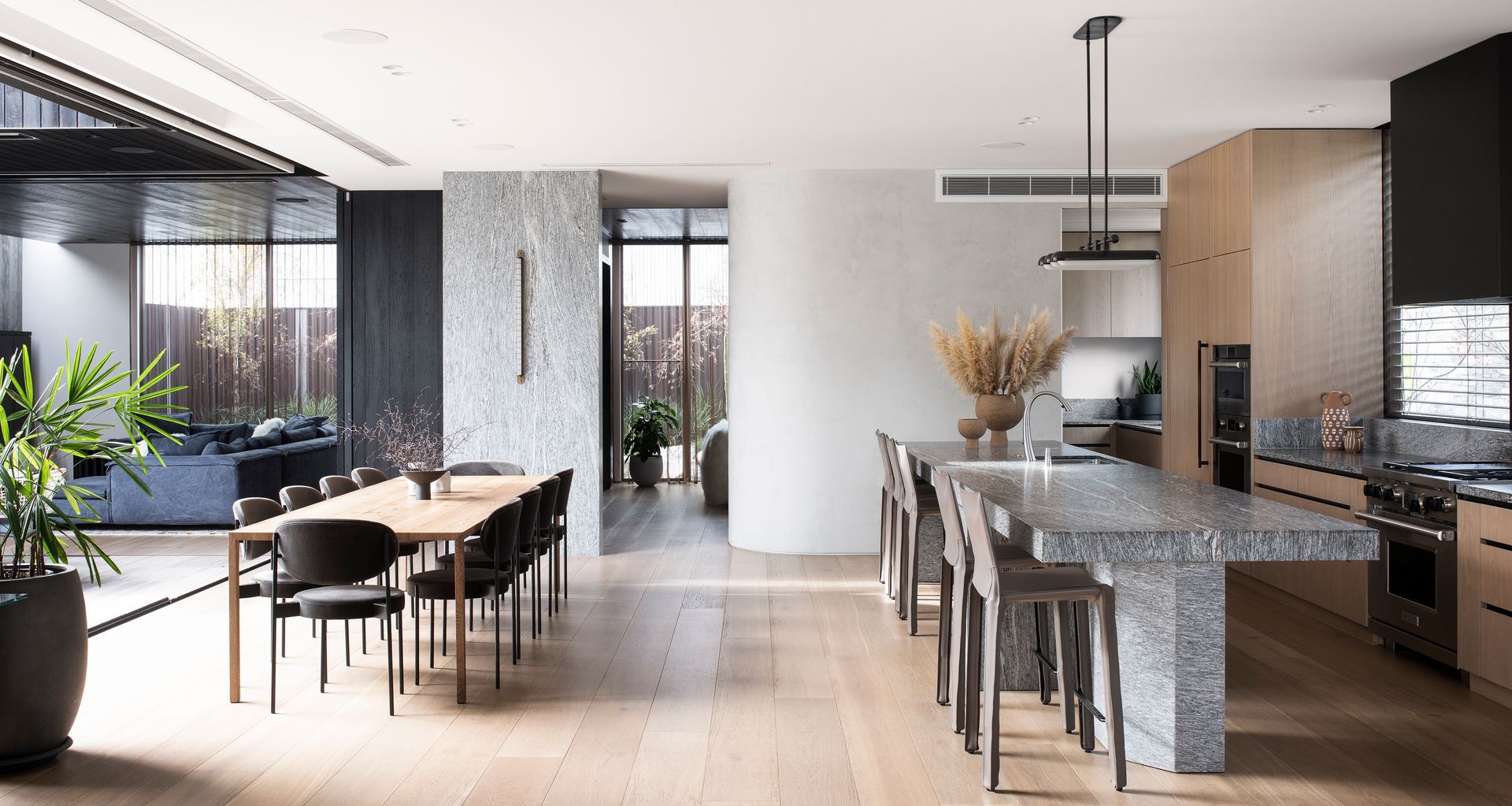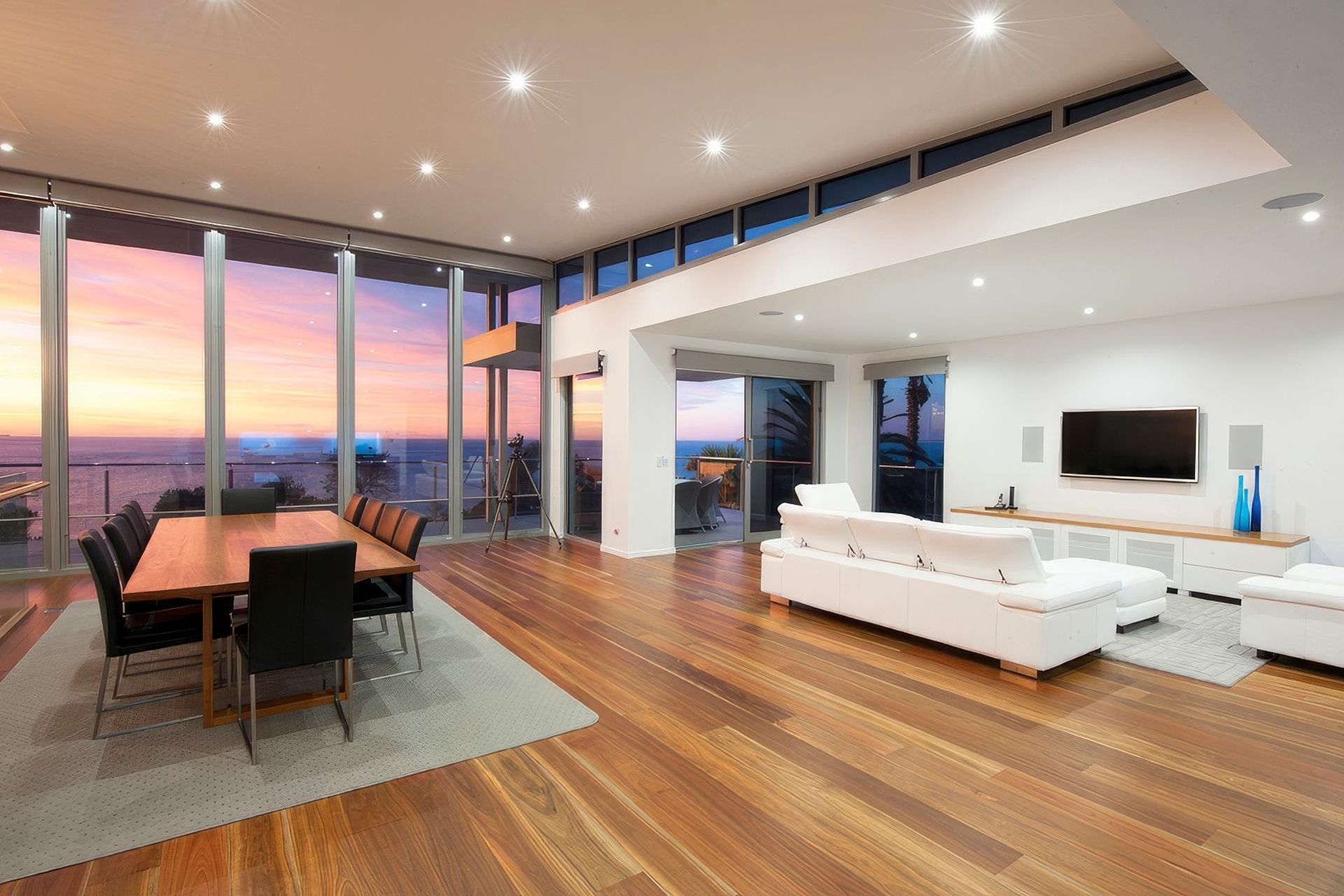A look at the pros and cons of engineered timber flooring

Engineered timber flooring (also known as engineered wood flooring) is an interesting option consisting of multiple layers of plywood or high-density fibreboard (HDF) arranged in a cross-grain configuration to minimise expansion and contraction. The structural base is topped with a thin layer of natural hardwood veneer, available in various species, grains, and finishes. In this article, we'll look at the pros and cons of this type of flooring and investigate why many homeowners see it as an interesting alternative to traditional hardwood flooring.
Pros of engineered timber flooring
Engineered timber flooring offers plenty of advantages:
Dimensional stability
Engineered timber flooring is less prone to warping, cupping, or gapping compared to solid hardwood, especially in wider planks and under varying environmental conditions. This is due to its construction, which typically consists of a hardwood veneer layer over a plywood or HDF core.
Flexible installation
Can be installed over various subfloors, including concrete and radiant heating systems, and can be used in different climate zones. Engineered wood's compatibility with a wider range of installation conditions makes it versatile for different building projects.
Environmentally efficient
The manufacturing process for engineered wood can be more sustainable than for solid hardwood, utilising less valuable wood for the core and producing less waste. For those concerned with environmental sustainability, this can be a significant advantage.
Can be refinished
High-quality engineered wood flooring can be sanded and refinished, albeit fewer times than a solid hardwood floor. This allows for some level of restoration and update over time, depending on the thickness of the top veneer layer.
Plenty of design options
Engineered flooring offers a wide range of finishes and appearances, closely mimicking the look of various hardwoods, so you have plenty of opportunity to create the style of floor you're after.
Cons of engineered timber flooring
Like any type of flooring, engineered timber has some potential disadvantages to be aware of:
Sound and feel differences compared to hardwood flooring
Some individuals find that engineered hardwood does not replicate the exact sound or feel of solid hardwood underfoot, which can be a drawback for those who value the traditional characteristics of solid wood flooring.
Potential for delamination
In some cases, engineered wood planks can experience delamination, where the layers begin to separate. This issue can be challenging to repair and might require replacement of the affected planks.
Perceived value and authenticity
Some homeowners and potential buyers may perceive engineered wood as less desirable or authentic than solid hardwood, potentially affecting the resale value or appeal of a home. This perception is subjective and may vary based on individual preferences and market trends.
Can be sensitive to harsh cleaners
Engineered hardwood floors may react negatively to harsh cleaning chemicals or excessive moisture, leading to damage such as warping, discoloration, or deterioration of the finish. It's recommended to use cleaners specifically designed for engineered wood and to avoid wet mopping.
Can be difficult to find exact match if replacements are needed
Over time, manufacturers may discontinue certain lines or batches of engineered wood, making it difficult to find an exact match for repairs or additions. Variations in dye lots and aging can also affect colour matching.
Vulnerability to sharp impacts
Although engineered timber flooring is generally hardy it can be susceptible to dents and scratches from sharp objects, heavy furniture, or pet claws.
Can be tricky to repair
While minor scratches and dents in engineered hardwood can often be repaired with touch-up kits or refinished, deeper damage affecting multiple layers of the flooring can be more challenging to fix. Complete plank replacement might be necessary for severe cases.
Uneven aging and fading
Engineered hardwood floors can fade or change colour when exposed to sunlight over time. Areas covered by rugs or furniture may also age differently, leading to uneven colouring or fading. Using UV protective coatings or window treatments can help mitigate this issue.
What to consider when choosing an engineered timber floor
Here are some of the key things to consider when you're considering engineered timber flooring:
Core construction
The stability and durability of engineered timber flooring largely depend on its core structure, which is designed to resist moisture and temperature fluctuations. High-quality materials like multi-ply hardwood or high-density fibreboard (HDF) provide superior stability and longevity compared to other core materials.
Wood species
The choice of wood species affects the floor's overall look, and maintenance needs. Harder woods are more resistant to wear and scratches, while softer woods may offer unique beauty but require more care.
Pricing
Of course, pricing will be a consideration for the floor you choose. Engineered timber flooring costs tend to range between $50 to $140+ per square metre.
Finish
The finish not only contributes to the floor's look but also its durability and ease of maintenance. UV-cured oil and polyurethane finishes are popular options, each offering different levels of gloss, protection, and care requirements.
Wear layer thickness
Although not the primary consideration, the thickness of the wear layer is crucial for determining the floor's longevity and the possibility of future refinishing. Thicker wear layers offer the potential for the floor to be sanded and refinished, extending its lifespan.
Environmental and health considerations
Opting for flooring with low volatile organic compound (VOC) emissions and certifications like FSC (Forest Stewardship Council) ensures healthier indoor air quality and supports sustainable forestry practices.
Related article: 11 popular types of flooring to consider for your home
A versatile type of flooring
As you can see, engineered timber flooring is a contemporary, cost-effective flooring option that you can use anywhere in your home. All you need to do is pick the style and finish what you prefer!
Browse a range of engineered timber flooring options from Australia's top suppliers on ArchiPro







